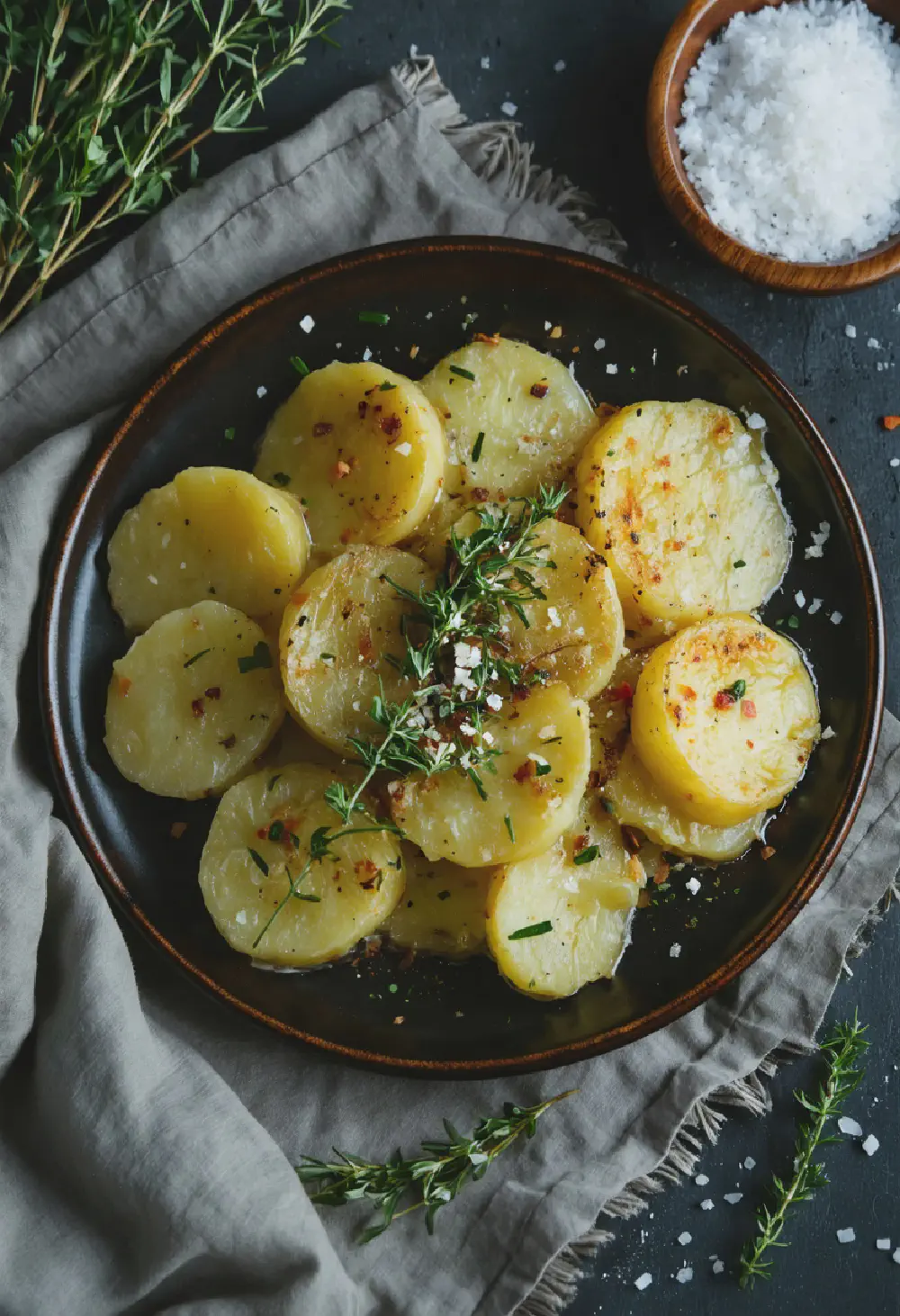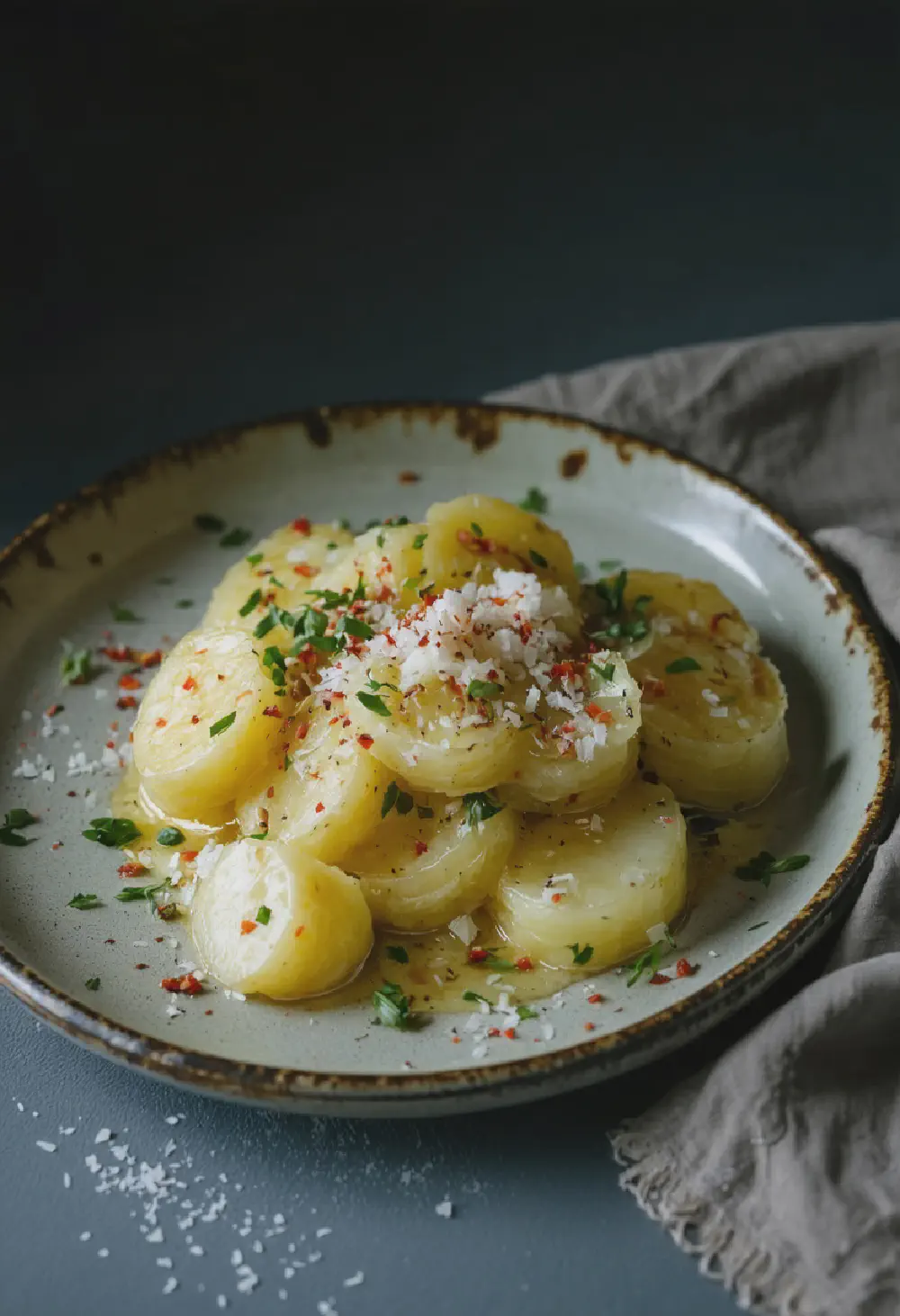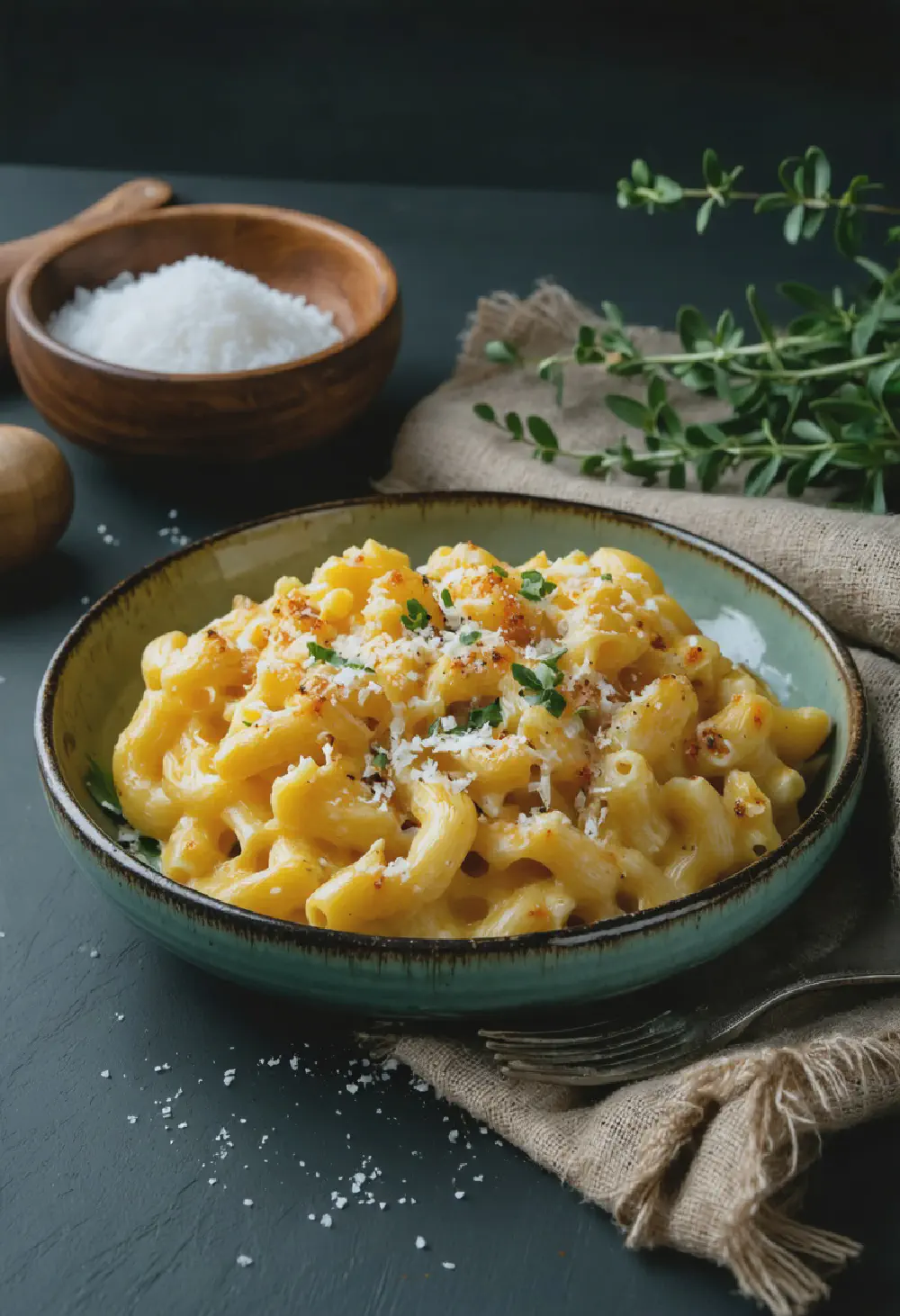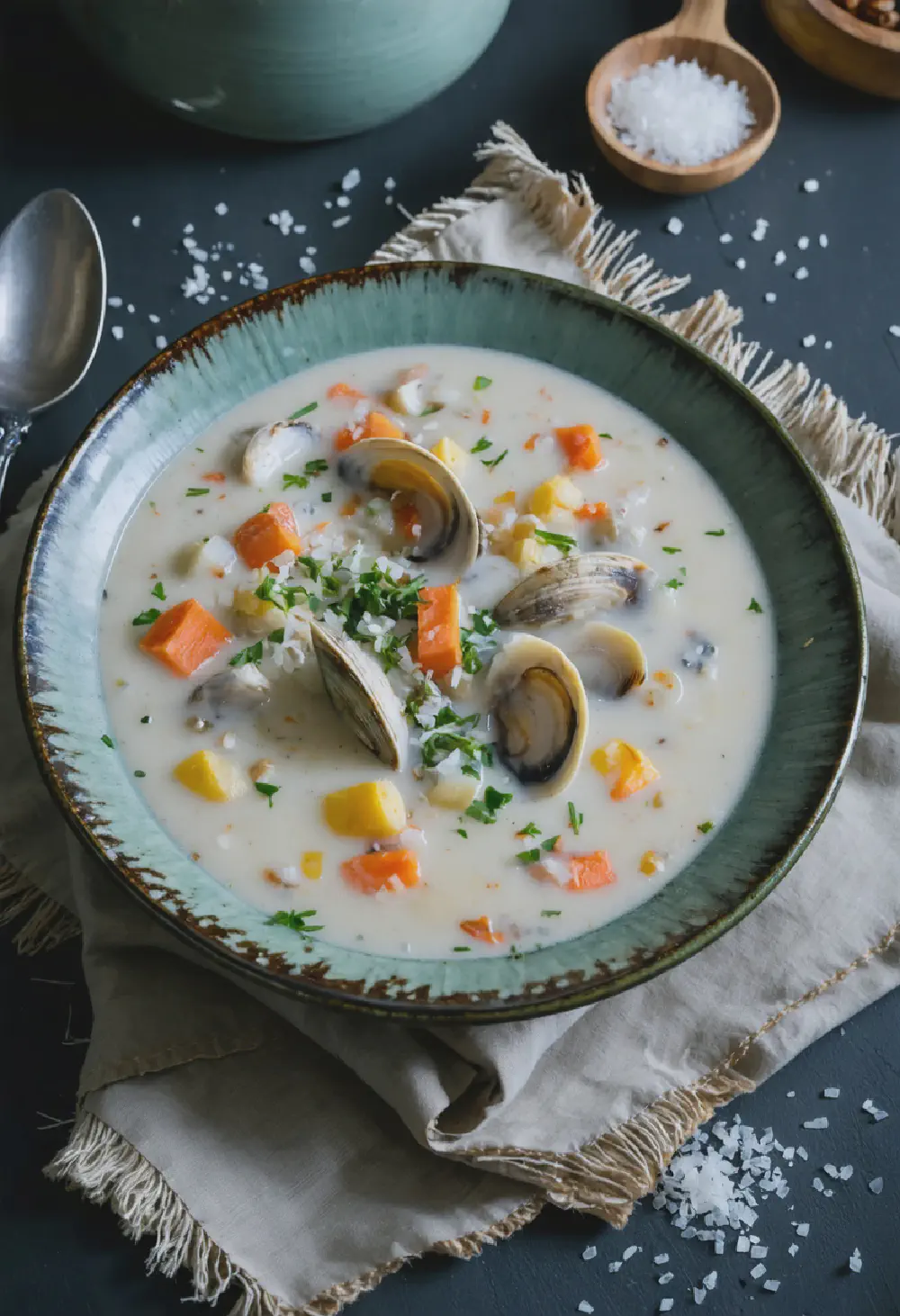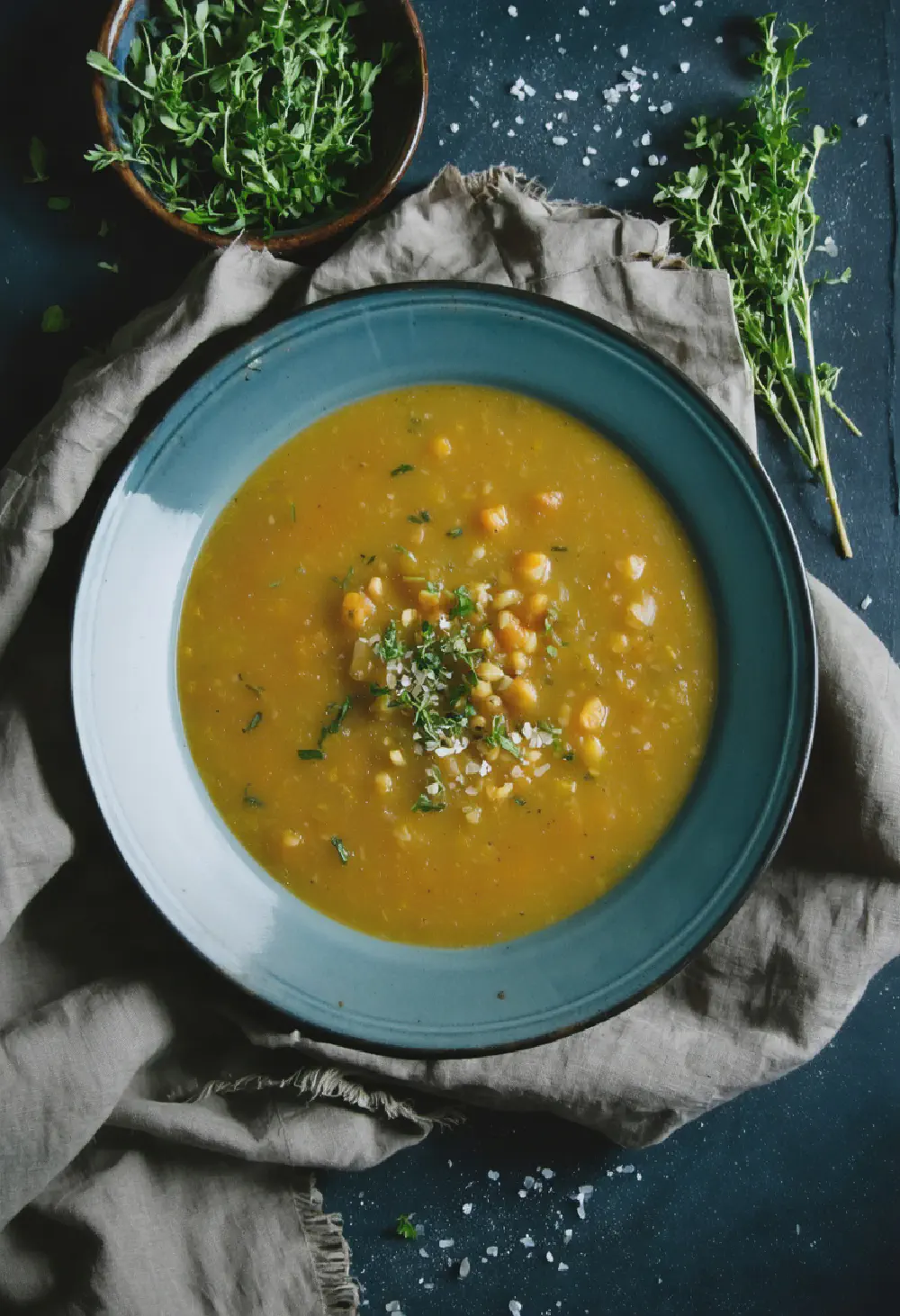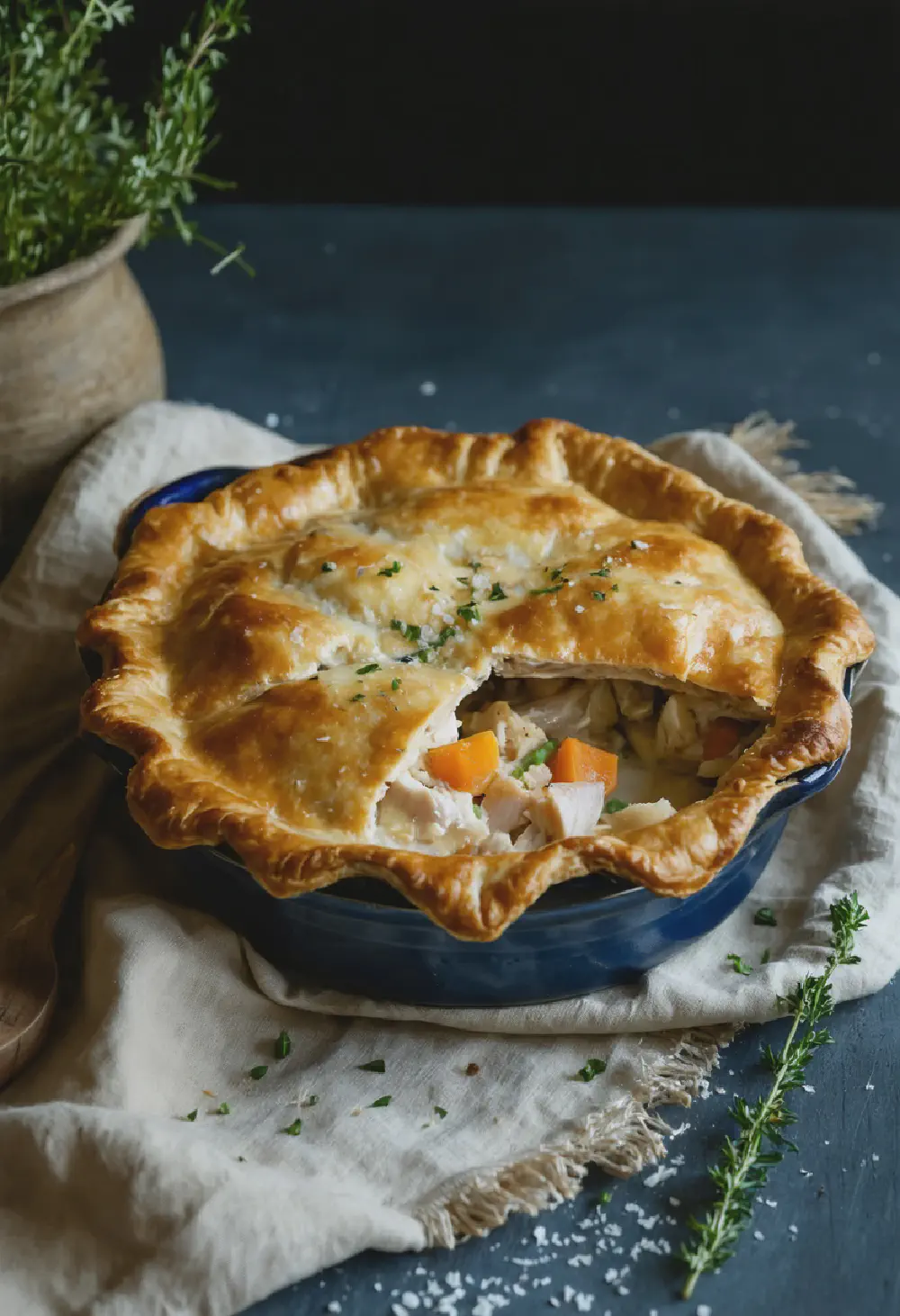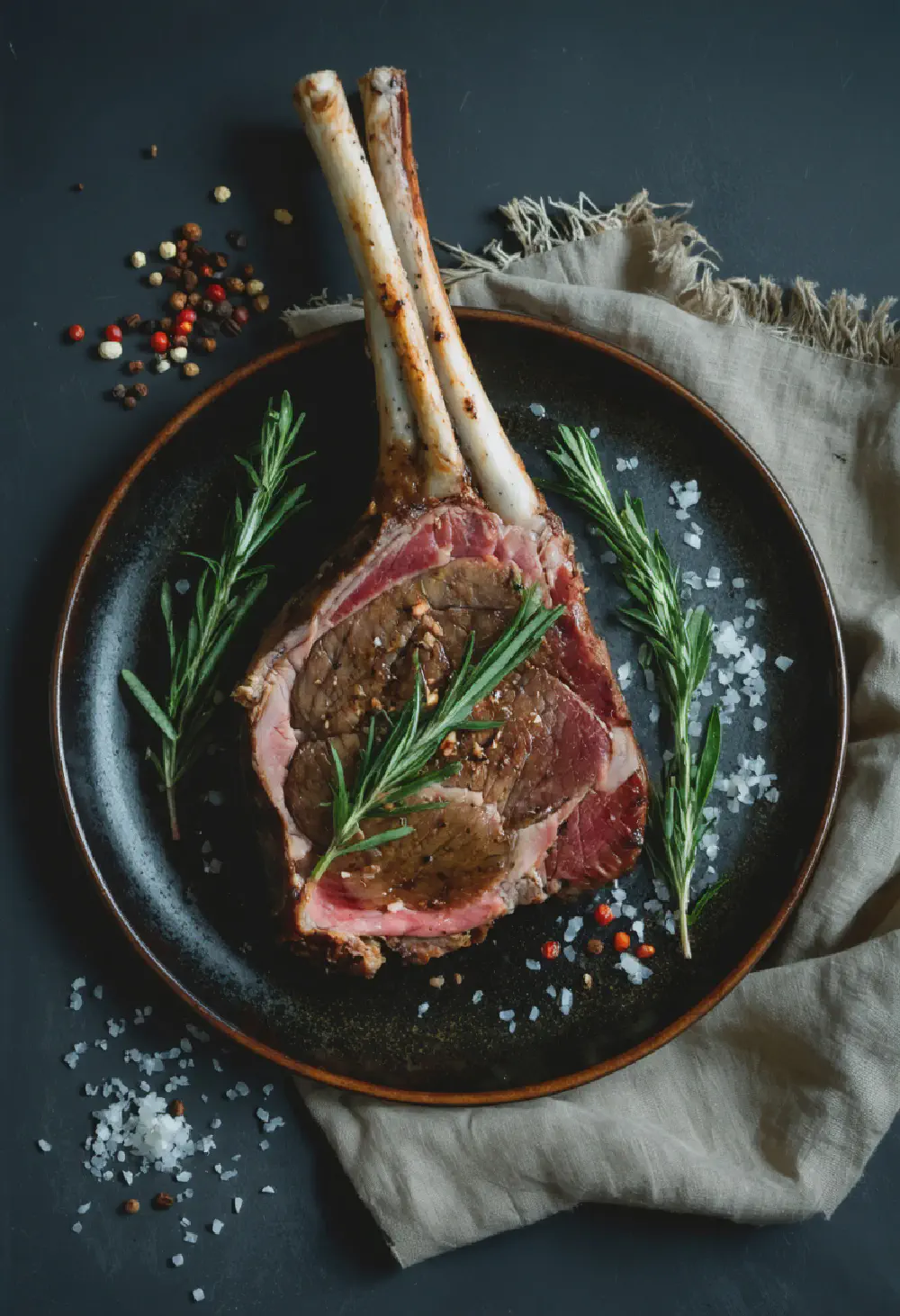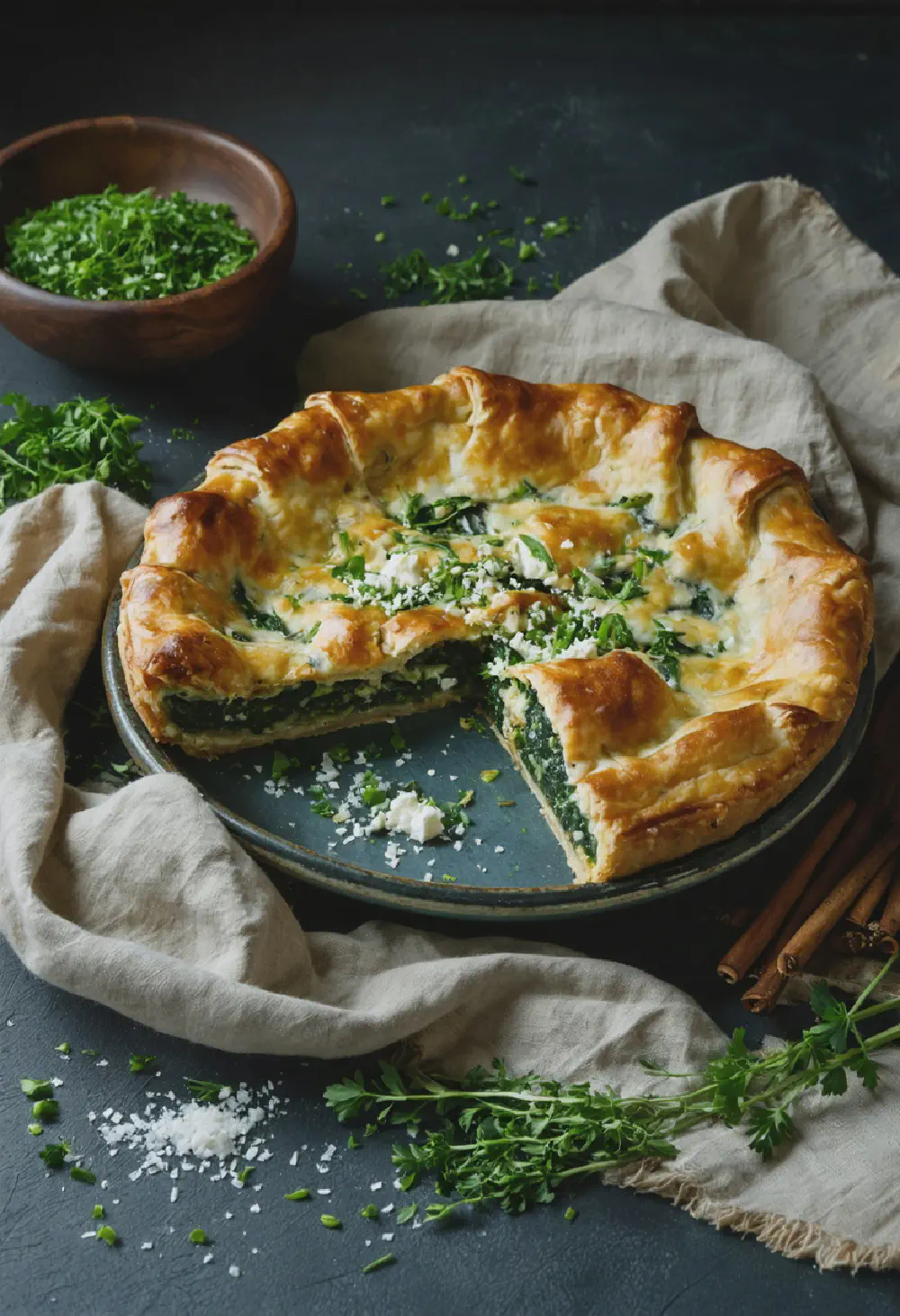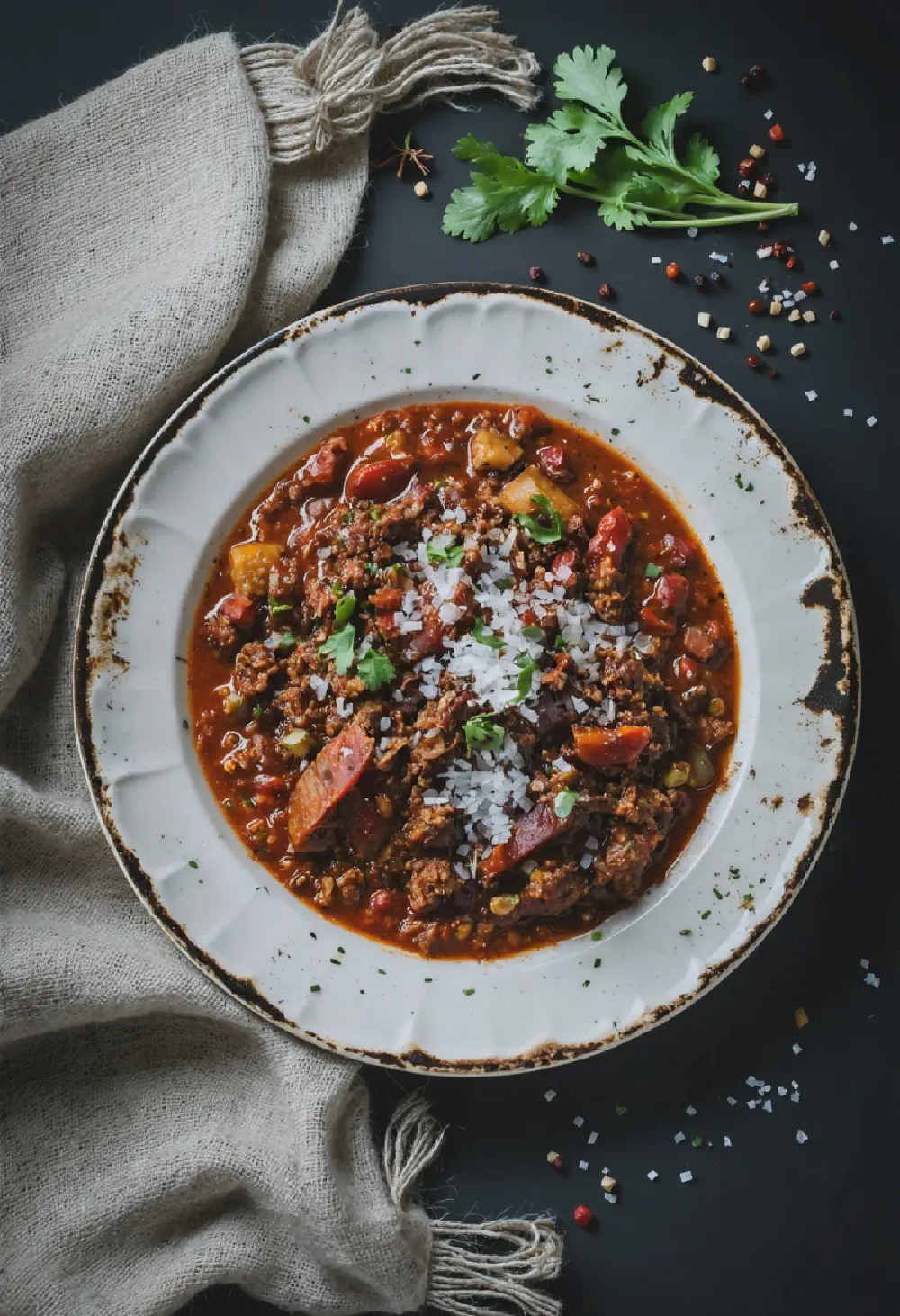Scalloped Potatoes
20M
1H and 35M
- Makes 6 servings
- 2 pounds Yukon Gold potatoes, peeled and thinly sliced
- 1 medium onion, thinly sliced
- 3 tablespoons unsalted butter
- 3 tablespoons all-purpose flour
- 2 cups whole milk
- 1 cup shredded sharp cheddar cheese
- 1 teaspoon salt
- 1/2 teaspoon black pepper
- 1/4 teaspoon garlic powder
- 1/4 teaspoon paprika
- Preheat your oven to 350°F (175°C). Grease a 9x13 inch baking dish with butter.
- In a saucepan over medium heat, melt the butter. Add the flour and whisk until smooth. Cook for about 1 minute, stirring constantly.
- Gradually whisk in the milk, ensuring there are no lumps. Continue cooking and stirring until the sauce thickens, about 5 minutes.
- Remove the saucepan from heat. Stir in the shredded cheddar cheese until melted and smooth. Season the sauce with salt, black pepper, garlic powder, and paprika.
- Layer half of the sliced potatoes and onions in the prepared baking dish. Pour half of the cheese sauce over the potatoes.
- Repeat the layering with the remaining potatoes, onions, and cheese sauce.
- Cover the baking dish with aluminum foil and bake in the preheated oven for 60 minutes.
- Remove the foil and bake for an additional 15 minutes, or until the potatoes are tender and the top is golden brown.
- Let the scalloped potatoes cool for 10 minutes before serving.
Scalloped Potatoes: A Creamy American Classic
History
Scalloped potatoes, a beloved dish in American cuisine, have a rich history that traces back to the early 19th century. The term “scalloped” originally referred to a cooking technique where food was baked in a creamy sauce, often with a topping of breadcrumbs or cheese. The dish evolved from simple potato and milk combinations to the more elaborate versions we enjoy today, featuring layers of thinly sliced potatoes bathed in a rich, creamy sauce. Over the years, scalloped potatoes have become a staple at family gatherings, holiday dinners, and potlucks across the United States, showcasing the country’s love for hearty, comforting meals.
Taste Profile
The taste profile of scalloped potatoes is what makes this dish a perennial favorite. The creamy sauce, often made with milk or cream and flavored with a hint of garlic and herbs, provides a smooth and rich base that complements the natural sweetness of the potatoes. When baked, the cheese melts into the sauce, adding a delightful sharpness and depth of flavor. The top layer of the dish turns golden and slightly crispy, offering a pleasing textural contrast to the tender potatoes beneath. Each bite is a harmonious blend of creamy, cheesy, and comforting flavors, making scalloped potatoes an irresistible addition to any meal.
Cultural Significance
In American cuisine, scalloped potatoes hold a special place as a symbol of comfort and togetherness. Often served at Thanksgiving, Christmas, and other significant family gatherings, the dish embodies the warmth and generosity of American home cooking. Its versatility allows it to be paired with a variety of main courses, from roasted meats to vegetarian options, making it a go-to side dish for many households. The cultural significance of scalloped potatoes extends beyond the dinner table; it represents the joy of sharing a meal with loved ones and the tradition of passing down recipes through generations. As a quintessential American comfort food, scalloped potatoes continue to bring people together, one creamy, cheesy bite at a time.
